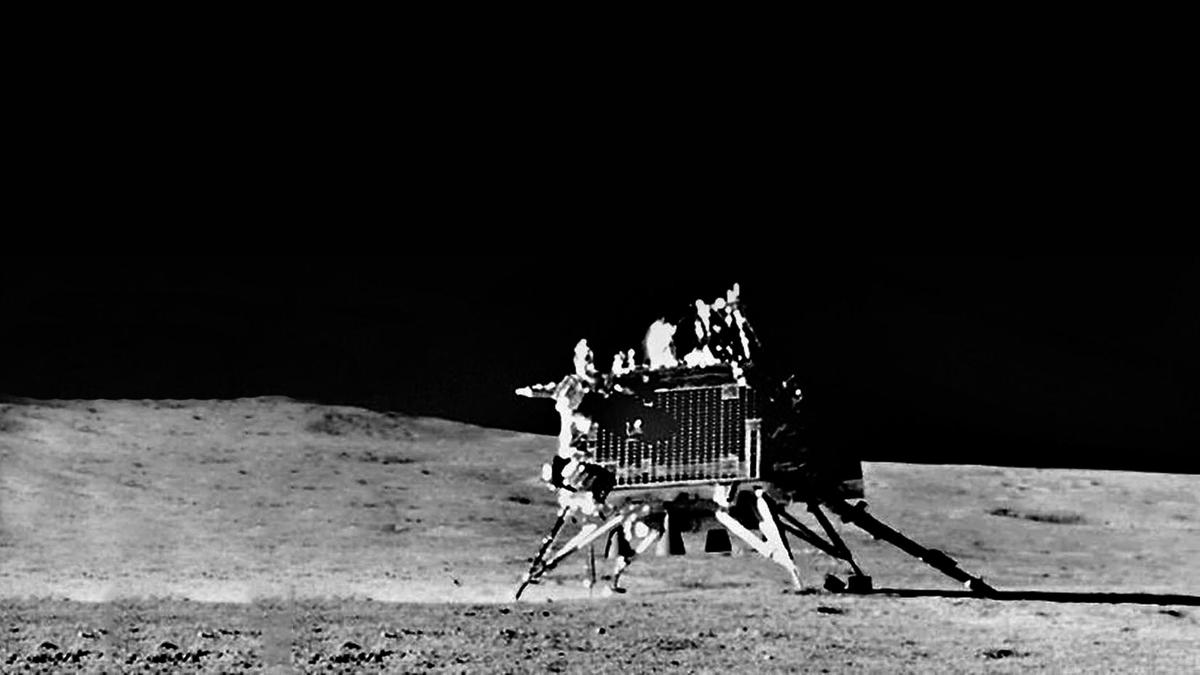
First detailed map of moon’s south pole area made from Chandrayaan data Premium
The Hindu
Astronomers are excited to be poring over the first ever detailed geological map of the moon’s south polar region, where India’s Chandrayaan-3 lunar module, Vikram, touched down on August 23, 2023. The map is expected to throw new light on the moon’s origin and evolution.
Astronomers are excited to be poring over the first ever detailed geological map of the moon’s south polar region, where India’s Chandrayaan-3 lunar module, Vikram, touched down on August 23, 2023. The map is expected to throw new light on the moon’s origin and evolution.
Researchers from the Physical Research Laboratory (PRL) in Ahmedabad, Panjab University in Chandigarh, and the Laboratory for Electro-Optics Systems, Indian Space Research Organisation, Bengaluru, created the map using data from the rover Pragyan, which was deployed by Vikram on a nine-day mission to analyse the chemical composition of the regolith — the loose rock fragments and dust that cover the lunar surface.
The cornucopia of geological information from the mission has helped scientists confirm what they always suspected: the moon harbours an underground ocean of molten rock, or primordial magma. Data from previous missions, such as the US uncrewed Surveyor spacecraft, the crewed Apollo moonshots, and the robotic Russian Luna and Chinese Chang’e 3 probes, indicated the presence of such a sea of lava beneath the lunar surface. But the actual extent of magma on the moon was not known since all the available data came from landing sites near the lunar equatorial and mid-latitude regions, which are far away from the poles.
Chandrayaan-3, however, was the first mission to land in a high-latitude polar region of the moon, 630 km from the south pole, and scientists considered it the best bet to solve the magma mystery. In September 2024, a team of lunar geologists from PRL announced that the Alpha Particle X-ray Spectrometer aboard the Pragyan rover had detected magma under the landing site. This meant the ancient ocean of molten lava extended across the entire moon.
The new map of Vikram’s landing site, published in the journal Advances in Space Researchon January 20, shows an undulating landscape of highlands and low, flat plains around the lander. The researchers traced the alignment of secondary craters — dug up when debris from an impact crater lands elsewhere — and identified Schomberger to be the primary source of the debris covering the Chandrayaan-3 landing zone.
Using the map, the scientists calculated the age of the region to be around 3.7 billion years, around the same time the first signs of microbial life emerged on the earth.
In fact, the earth and the moon have had similar evolutionary trajectories, as is evident in the dynamics of the earth-moon system. The inclination, or tilt, of the moon’s orbit is for example to the earth’s rotation and both bodies are similarly aligned to the ecliptic plane of the solar system. Their terrestrial and lunar geochemistries are also complementary, with both possessing several common isotopes, pointing to their origins from the same cloud of molten material.













